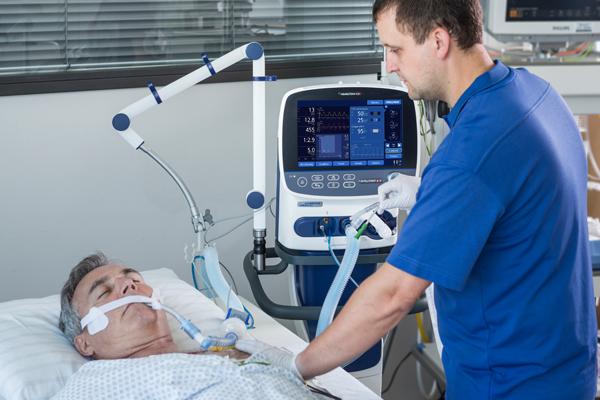Among modern medical equipment, medical ventilators, as a key life support tool, are widely used in intensive care, anesthesia, first aid and other fields. Its main function is to help patients maintain normal breathing, especially when respiratory function is impaired. The performance and reliability of the medical ventilator are directly related to the patient’s life safety and recovery results. Among the many components, the use of coreless motors plays a vital role in the design and function realization of the medical ventilator.

1. Efficiency of gas transportation
One of the core functions of a medical ventilator is to deliver a mixture of oxygen and air to the patient’s respiratory tract. With its efficient rotation speed and stable output characteristics, the coreless motor can provide the required air flow in a short time. This high efficiency allows the medical ventilator to quickly respond to the patient’s needs, especially in emergency situations, to quickly provide enough oxygen to ensure the patient’s life safety.
2. Precise airflow control
In medical ventilators, precise control of airflow is critical. Different patients may require different air flows and pressures to meet their individual treatment needs. The design of the coreless motor enables precise speed adjustment to control the size and pressure of the airflow. This precision not only improves treatment effectiveness but also reduces the risk of complications caused by unstable airflow.
3. Small size and light weight
The small size and light weight of the coreless motor make the overall design of the ventilator more compact and portable. This feature is especially important for emergency equipment that needs to be moved frequently. The lightweight design makes it easier for medical staff to operate and carry the medical ventilator. Especially in emergencies, the device can be quickly transferred to the patient to provide timely assistance.
4. Low noise operation
In a hospital environment, noise control is an important consideration. The operating noise of the coreless motor is relatively low, which allows the medical ventilator to cause no additional psychological stress or discomfort to the patient during use. Especially in intensive care units, a quiet environment helps patients recover and reduces anxiety caused by noise.
5. Reliability and Durability
The reliability of the medical ventilator is directly related to the patient’s life safety. Coreless motors are usually designed for high durability and stability, allowing them to maintain good performance over long periods of use. This reliability allows healthcare workers to use the medical ventilator with confidence without worrying about the possible risks of equipment failure.
6. Intelligent control
Modern medical ventilators increasingly adopt intelligent control systems to achieve real-time monitoring and adjustment of patient status. The rapid response characteristics of the coreless motor allow the ventilator to quickly adjust airflow and pressure based on sensor feedback data. This intelligent application not only improves the degree of personalization of treatment, but also enhances the adaptability of the equipment to better meet the needs of different patients.
7. Adapt to multiple modes
Ventilators usually have multiple working modes, such as spontaneous breathing, assisted ventilation, and controlled ventilation. The flexibility of the coreless motor allows the medical ventilator to operate smoothly in different modes, ensuring that patients receive appropriate respiratory support in various situations. This adaptability is particularly important for critically ill patients, whose respiratory needs may change over time.
8. Convenience of maintenance and upkeep
The structural design of coreless motors is usually relatively simple and easy to maintain and maintain. This feature allows medical staff to quickly check and repair equipment when there is a problem, reducing equipment downtime and ensuring that patients can continue to receive respiratory support.
in conclusion
To sum up, the use of coreless motors in medical ventilators reflects their importance in many aspects such as gas delivery, precise control, portability, low noise, reliability, intelligence, adaptability and maintenance convenience. With the continuous advancement of science and technology, the performance and application range of coreless motors are also constantly expanding, providing a strong guarantee for the functional improvement of medical ventilators and the safety of patients. In the future, with the continuous development of medical technology, the application of coreless motors in medical ventilators will continue to play an important role, providing more precise and efficient respiratory support for more patients.
Writer : Sharon
Post time: Sep-27-2024

